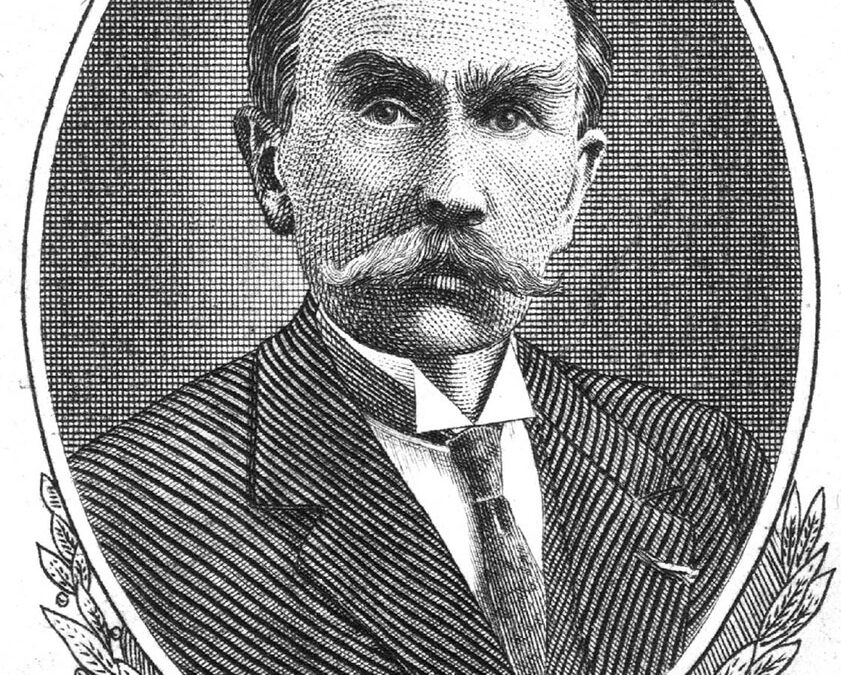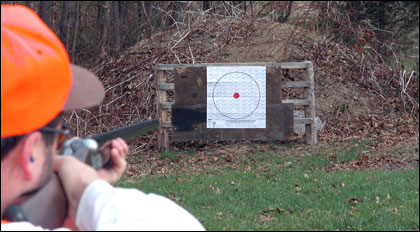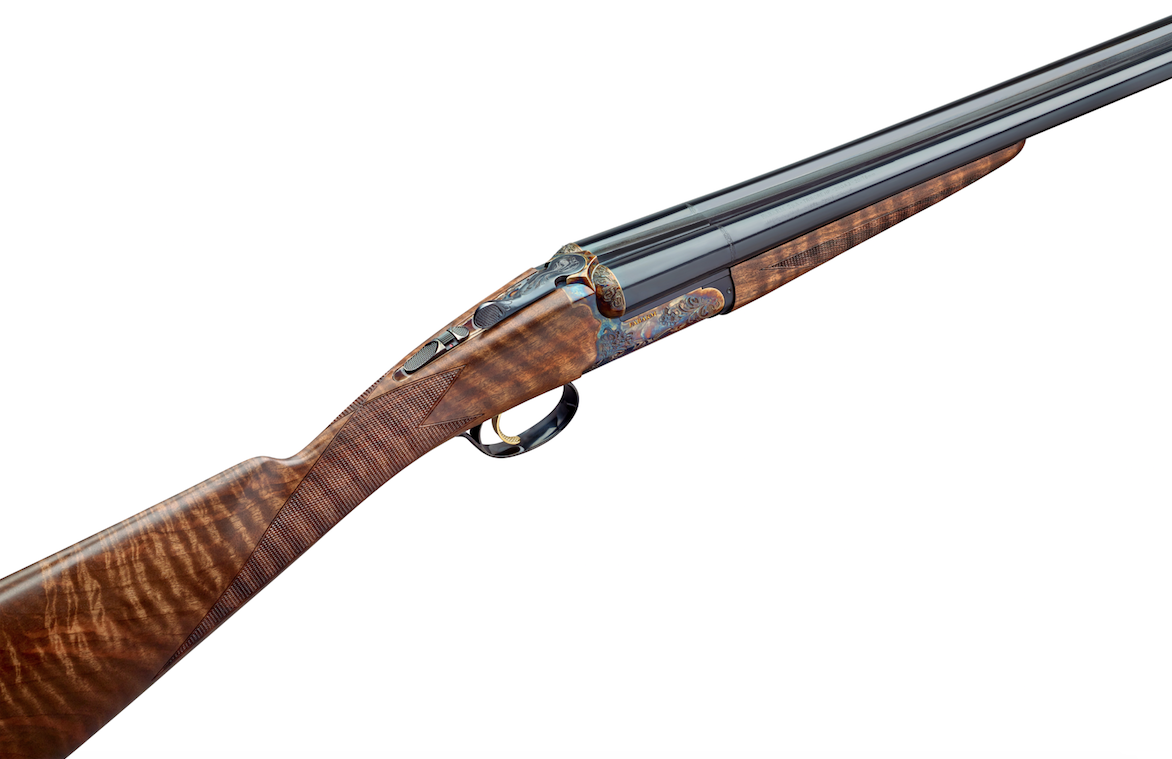From its sliding breech to its retractable sling, this graceful French beauty stands as an objet d’art in a world of lookalikes. Truly, one of a kind.
Guns, like most tools, evolve in almost the same way as animals do. And, in the same way that we tend to oversimplify the linear progression of animal ancestry, we often see the history of firearms as a simple, straightforward process. In shotguns, we think, the single-barreled fowler was turned into a double-barreled game gun by such legendary ’smiths as the Mantons. Soon afterwards, percussion caps replaced flintlocks as an ignition system. Lefaucheux invented the pinfire, and more practical breechloaders soon followed. Finally, hammers moved inside. After Anson & Deeley invented the boxlock in 1875, evolution of the double gun virtually stopped; there have been no major changes in design to this day.
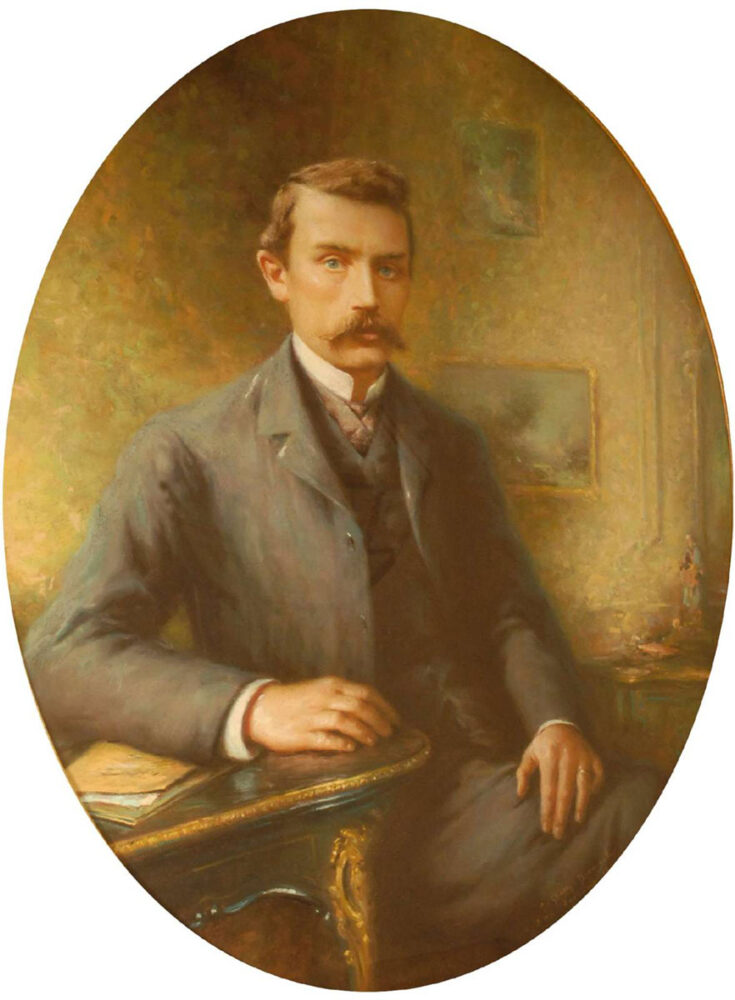
Portrait of Regis Darne
All of which is true, sort of, but is only part of the story. In the 1860s, ’70s and ’80s, as it became apparent that the breechloader was the wave of the future, various systems of opening and locking game guns proliferated like dinosaurs in the late Cretaceous. It was not at all apparent at the time that the break-action, top-lever, hammerless double was going to be the one design that would predominate in the future. There were many underlever designs, both “snap”-locking, forward pivoting types and “screw grip,” sideways-swinging ones. There were doubles with two bolt-action breeches working side-by-side with their bolt handles facing outward, built on a fixed frame.
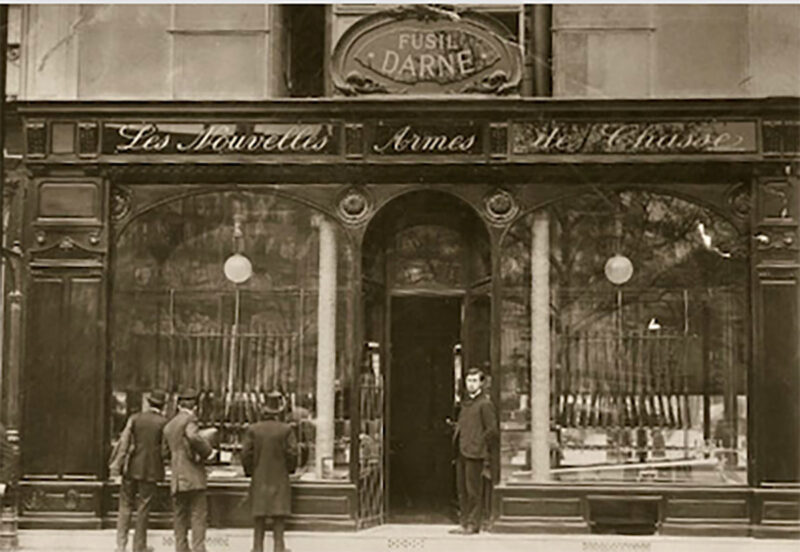
Sportsmen of the day window shopping outside the F. Darne fils Ainé showroom.
There were also more than a few designs in which the breech and barrels did not pivot apart, but slid away from each other. In many of the English sliding designs, the barrels moved forward, away from a fixed breech, and then pivoted down as in a conventional gun. I have seen one continental—German, actually—design, a double hammerless rifle, in which the barrels slid forward about a quarter-inch, then pivoted sideways on a fixed frame.
These guns were interesting, but had no particular advantages over the already-common, drop-barrel designs.
In fact, because they were more complicated, they were more expensive to make. More elegant were certain pinfires in which the barrels did not pivot at all, but simply slid forward when a lever under the action was swung out and forward. When locked up, these guns were as rigid as muzzleloaders, a comfort to tradition-minded shooters who distrusted the “looseness” of drop-barrel guns.
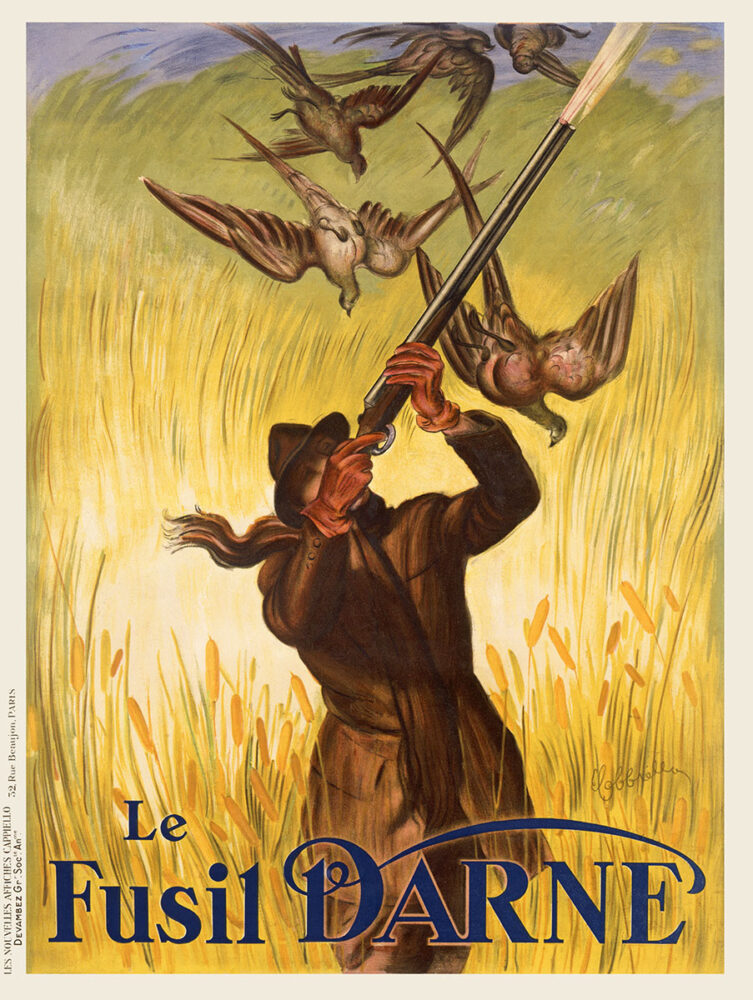
Advertising Poster, source Gallica BNF
Despite their strength and beauty, these guns vanished from England in the 1870s. In France, the odder actions continued, as a few have to this day. F. Dame Fils Ainé made its first guns in 1881, hammerguns on fixed frames with a breech that pivoted up and back from a rear hinge while the barrels remained stationary. The Company soon brought out a hammerless version that, though not as graceful as its later designs, was still in production in 1939.
Then, in 1894, Dame introduced a gun with fixed barrels and a breech that slid to the rear when a lever that fitted into the top of the action was pivoted up and back. While the Dame has never rivalled the break-action gun in numbers sold, a recognizable version was made from then until the 1970s. While it never became popular, it has always been known among knowledgeable sportsmen. The dog painter Percival Rosseau shot one. Gough Thomas, one of the greatest of all gunwriters, praised it in two books. But until a couple of importers briefly brought it to the U.S. in the 1960s, few Americans had ever seen one.
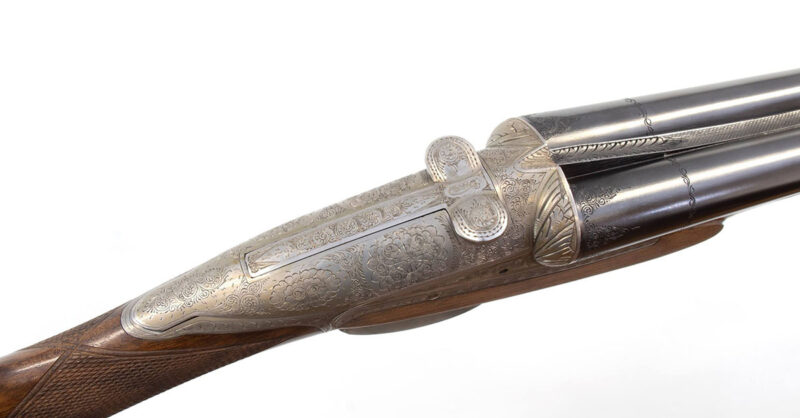
In 1894, Darne introduced a gun with fixed barrels and a breech that slid to the rear when a lever that fitted into the top of the action was pivoted up and back.
I first encountered the Dame in the late 1960s on paper in a series of articles by Virginia gunwriter Roger Barlow in Shooter’s Bible and Gun Digest.
I was a kid with a taste for guns and bird hunting, and a burning ambition to be a writer. The income level likely to be achieved by the second does not bode well for champagne tastes in the first. The snaky grace of the Dames in the photographs attracted me, but so did the comparatively low prices. At the time prices for the Dame ranged from $400 at the low end to no more than $750 for a truly elegant, 28-gauge “Quail Hunter.” I was hooked, in theory (though even $400 was an enormous investment at the time). But where to find one?
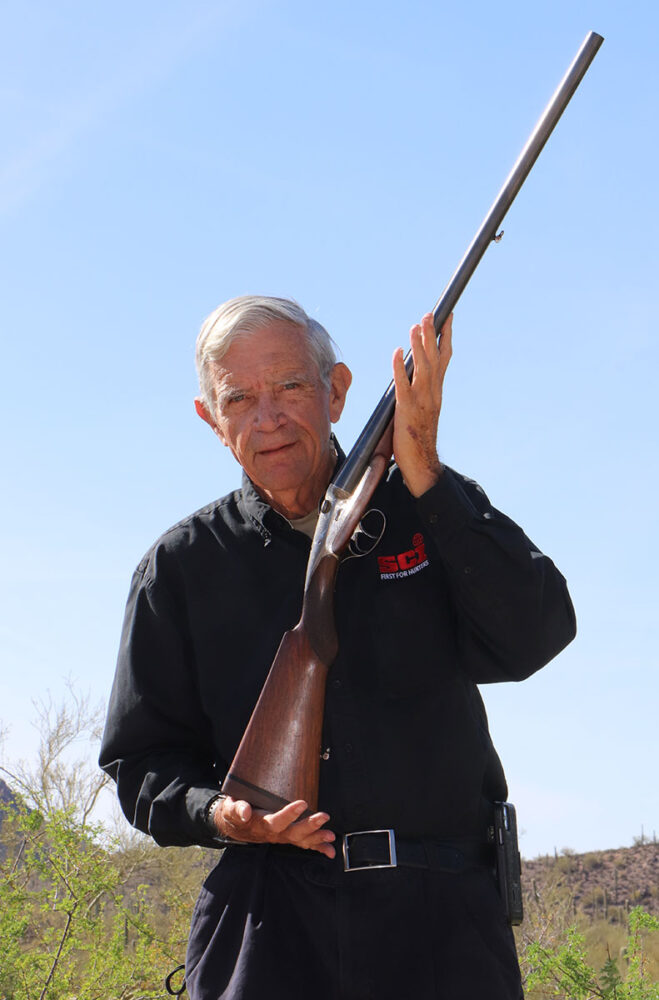
Until a couple of importers briefly brought it to the U.S. in the 1960’s, few Americans had ever seen a Darne.
Since neither importer did well with it (“If it’s weird it ain’t worth a damn,” a comment by a western stockmaker on one of mine, was an all-too-typical attitude), it took years. In the late 1970s, still poor, I saw a strange gun in a rack at a Cambridge, Massachusetts, sporting goods store. I asked to see it. It was a 16 gauge, of plain grade, with no engraving. But when I pulled up on the “ears” that projected from the action, the breech slid back as though on greased rails. The gun was going for, I believe, $350 at the time. I bought it.
My partner, Betsy, quickly took it over, mostly because it was a 16 gauge, her favorite. But it had a couple of problems. One was that it was chambered for shorter shells than 2 3/4 inch. But more important, it wasn’t a Darne! Oh, it was a Darne-patent gun, made in St. Etienne, the town where Darnes have always been made. But it was a Charlin, made by J.G. Gaucher. I have never been able to see any differences between its quality and the lower-grade Dames; in fact, its breech slid back smoothly after opening like the highest-grade “V”-model Darnes, rather than the two distinct movements like the standard or “R” Darnes I have owned. Still, it was an “imitation” and as such, one of the guns run down regularly in Darne’s own sales literature.
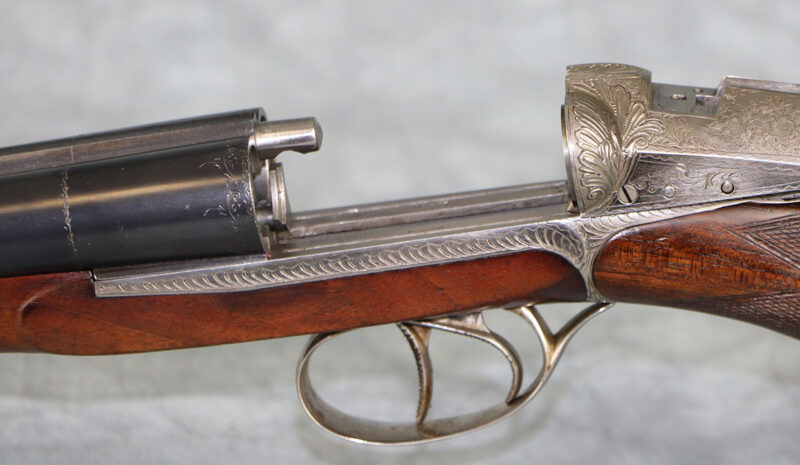
Old Darnes don’t get looser, only smoother.
Which didn’t matter of us. But as we tried to gather information, we lent it to a gunsmith who misunderstood us and sold it for less than I had paid. Once more, the Darne had become an elusive legend. But not for long. Betsy had now been bitten by the gun bug. She found an R-15 Darne, an engraved grade 20 gauge, in a Texas dealer’s catalogue, and soon it was ours.
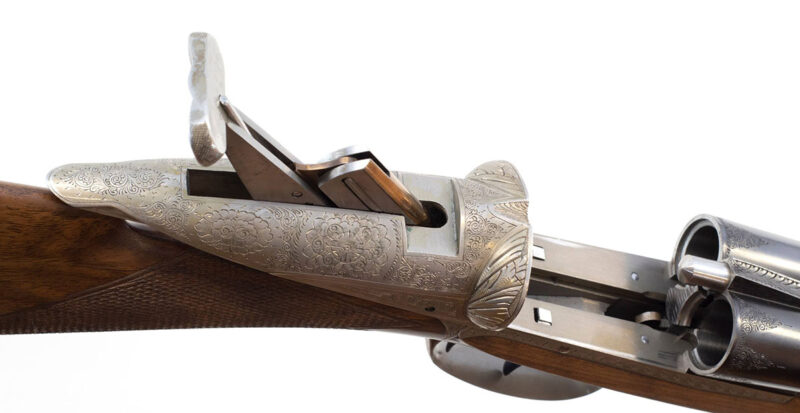
When you drop the shells into the barrel and push forward the powerful camming lever, the breech will actually compress the rim slightly.
It was gorgeous. One of a kind, indeed.
The figured walnut glowed with flame-like streaks. The long, 28-inch barrels were joined by Darne’s distinctive “plume” rib, which starts in a notched projection above the breech and dives down between the barrels to re-emerge at the muzzle. From this concave sweep the action flowed back in rounded lines to a slim, slightly swan-necked English grip. It had to be the most graceful shotgun I had ever seen.
Unfortunately, neither of us shot our best with it. The gun, though feather-light, was choked as tightly as a trap gun and stocked too short for me and too low for Betsy. In the next few years, we went through a 12-gauge R-15 with a semi-pistol grip (mine, still not a good fit), a 20-gauge, 25-inch barreled R-10 (Betsy’s, which we both shot well) and an experimental prototype “round-action” 28-gauge Bruchet, Darne’s successor, which fit well but had some mechanical problems, and which, after Betsy’s untimely death, I traded for another R-10. This is my present Darne—a good-fitting 20 gauge with 28-inch barrels and a straight stock. I think I’ll keep it. Now what I need is a high-grade 28-gauge Bruchet and an old plain grade ten….
So what is it about the Darne that has survived both a couple of ill-fitting guns and a period in my life when I sold almost all my guns—and kept me coming back for more?
First, the Darne’s “eumatic” nature; its strength, lightness, pointability, low recoil. The word eumatic was coined by the late Gough Thomas. He defined it as “the quality in a manually-operated device whereby it is totally correlated to the human being who has to use it.” The Darne, once you get used to its peculiarities, is among the most eumatic shotguns ever built. Its strength is obvious—old Darnes don’t get looser, only smoother. Its fixed frame, powerful lockup and monobloc barrel base offset the minor disadvantage of having to remove the sliding breech (a simple operation you can perform in seconds with a pocketknife) in order to see clearly down the barrels. The reasons for its lightness are obvious as well. The Darne has more wood and less steel than conventional shotguns, despite its strength. And its barrels are joined with only one rib rather than one above and one below.
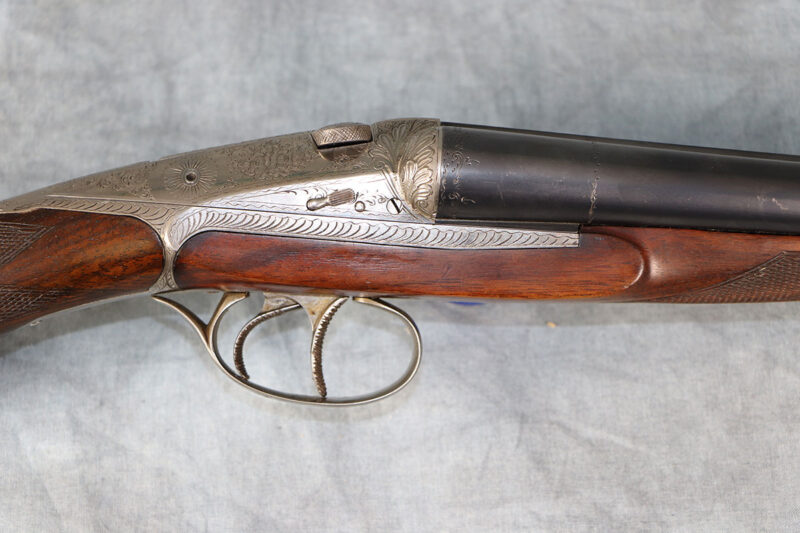
Relevant today, the Darne way.
The “pointability,” though allied to lightness, is more complex. Probably any shotgun can be made very light, but mere light weight without proper balance can be as much a hindrance as a help. The Darne concentrates its weight between your hands, and always swings naturally—I have never handled a clunky Darne. Even the magnum 12s and (rather light) 10s handle like English game guns. Part of this is design and part is execution—the gracefully swamped barrels, larger at the ends than in the middle (actually this is true of virtually all quality doubles, but more obvious in the Dame than in most) doubtless play a part in balance, too. It has taken me a while to find my optimum measurements in a Darne, but when they fit, I hit.
Finally, there’s this matter of recoil. One of the fascinating components in old Darnes above the R-10 grade (and as far as I know, all Bruchet Darnes) is their “obturator discs.” Since the barrels of all double guns converge, and the breeches of all break-action doubles are a plane surface, it only takes a moment’s thought to realize that, in conventional guns, the shell base must not lie flat against the standing breech. Furthermore, tolerances for the rim cuts in conventional doubles are such that you can often hear the shell rattling around inside if you shake the loaded gun. On the face of the Darne’s sliding breech you will see two ever-so-slightly angled discs protruding forward . When you drop the shells into the barrel and push forward the powerful camming lever, (Darnes were popular in France’s tropical colonies because they could digest and re-size even the worst damp-swollen cardboard shells), the breech will actually compress the rim slightly! So you get no “secondary recoil” from the shell’s slamming back or expanding, and as a bonus, no hammering of the breech to loosen it. Such refinements may be why it is less unpleasant to shoot a seven-pound Darne 10-bore than some eight-pound 12s.
 And finally—or should I put this first—there is Darne’s beauty. No gun on earth is more graceful. Nothing, no obtrusive toplever or even smoothly-curved underlever, breaks the sweep of its curves. Truly, one of a kind.
And finally—or should I put this first—there is Darne’s beauty. No gun on earth is more graceful. Nothing, no obtrusive toplever or even smoothly-curved underlever, breaks the sweep of its curves. Truly, one of a kind.
The “ears,” the little tabs that you grasp with your thumb and forefinger to release the countersunk lever, are virtually invisible from the side. The engraving, often much bolder than on English or Spanish guns, offsets the simplicity of line perfectly (though even the unengraved guns, like my present 20, look good to me).
Darne went under in the early 1970s. Paul Bruchet, manager of the best or “V” grade workshop for Darne, bought the machinery and carried on the tradition. [Geoffroy Gournet of Easton, Pennsylvania, imported Darne shotguns as recently as 2014.]
A few pointers from one who has owned several Darnes: The safety, a swiveling tab on the R (now called “A”) guns, is usually put on the left side of the action where you must turn the gun awkwardly to work it. I prefer it on the right, especially on an upland gun, where you can work it as easily as the thumb safety on a break-action gun—only with your forefinger. There is a sling available. Do not picture a clanking Germanic rifle-type deal. The French sling rolls up inside the stock—the only visible portion is a smaller version of the “ears” of the action, fitted under the stock. Grasp this and pull it out against spring tension, and the ears fit into a virtually invisible recess under the barrels.
If possible, try to handle a Darne before you buy one. You will see such odd things as how the notch on the breech at the head of the plume rib frames the barrel ends in one of the most distinct sighting pictures available on any gun. You can feel the balance. Give yourself time to get used to the action of the slide (best to move it briskly rather than slowly) and learn how to dismount the barrels from the stock. (Yes, they do come off—it took me a year or two to learn just how.) You can figure out how to slip a blade under the foot of the opened breech to press the little button that enables you to remove it. And so forth.
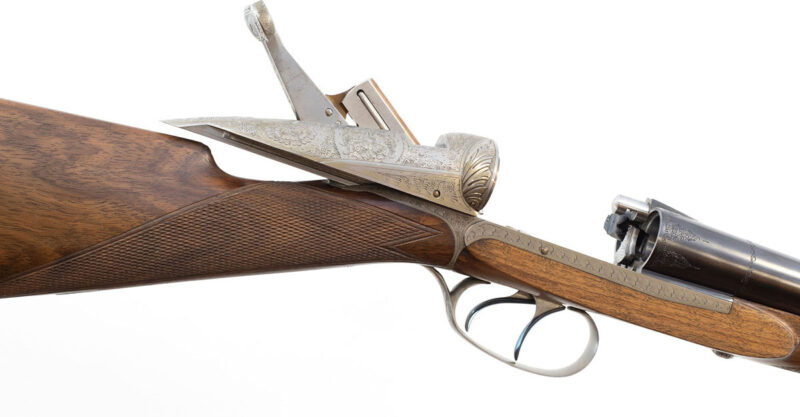
From its sliding breech to its retractable sling, this graceful French beauty stands as an objet d’art in a world of lookalikes.
You might find, as I do, that because of some different proportions of stock to breech to triggers that you will need a slightly longer stock in a Darne than in a conventional gun—that is, a Darne of, say 14 1/2 inches length of pull will feel like a conventional gun of 14 or 14 1/8. The wooden checkered butt of the Bruchet Darnes is removable—and it’s a lot easier to shorten than lengthen.
And I’ll be surprised if you don’t fall in love with this odd duck of a gun, this objet d’ art among so many lookalikes. I love my sidelocks and my rifles. But if ever the horrible day came when I would be confined to one gun, I wouldn’t be too unhappy if it could be a high-grade “B” Bruchet or old “V” Darne, a 20 or a 28, with deep scroll engraving, a French sling, a straight English grip. Because the Darne, one of a kind, is just that good.
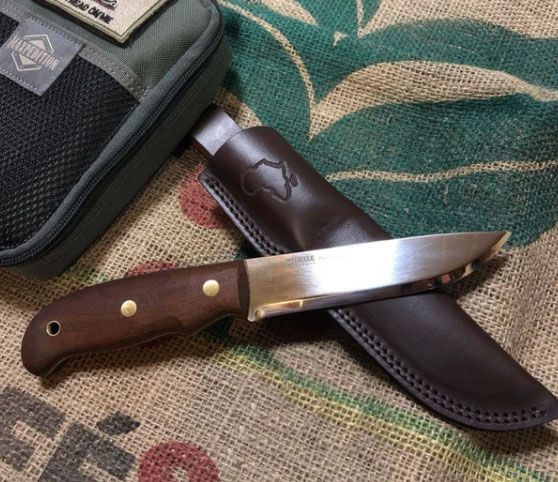 Didi Galgalu is a knife made for big adventurers. Designed in collaboration with the Voetspore team and worthy to take on any transcontinental adventure. Unique in both its design and the way it was developed. Buy Now
Didi Galgalu is a knife made for big adventurers. Designed in collaboration with the Voetspore team and worthy to take on any transcontinental adventure. Unique in both its design and the way it was developed. Buy Now

